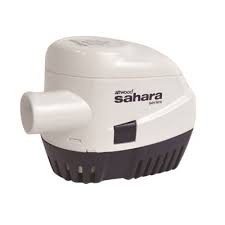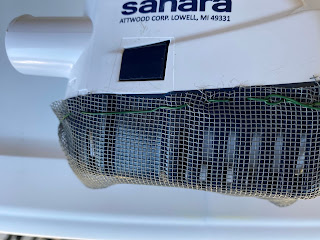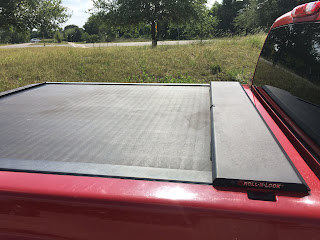Does your bilge pump seize up? Here's a trick.
DYI bilge pumps and leaking thru-hull fittings
Over the years, I've had bilge pumps seize up because debris or worse, fishing line, ended up wrapping around the impeller. Bam! No working bilge pump. It happened once when I was in a huge downpour on Sam Rayburn Reservoir. Not only was I taking on water from the rain, but it was super windy and waves were crashing in the boat.
We had so much water come in, we could not get on plane. No working bilge pump either!
If I had ordered the boat new from the factory, I would have had a second bilge pump installed. (I highly recommend this.) As it was, I bought the boat new from dealer's stock. (See my earlier blog posts about my boat-buying quest.)
We had to idle in; we barely made it.
After the trip, I replaced the bilge pump. It worked great, but I still had a leak. Here I go again — take everything out so I can get to the the bilge area. Got to find that leak.
To get to the bottom of the bilge area, I need to take out one battery and two PowerPole pumps. It's not hard, but a pain none the less.
Once I got to where I could reach the hoses, I noticed one hose fitting on a thru-hull fitting seemed loose. So I gave it a little wiggle. Guess what? The fitting was split at the water line. No wonder it was leaking. Below is a photo of the broken thru-hull (right) and a new stainless steel replacement fitting (left).
From first look, the broken fitting looks like a stainless steel fitting. Is is not. Ok, permanent fix time: I replaced every thru-hull fitting with stainless steel fittings. For my boat, I needed both 3/4 inch and 1-1/8 inch fittings. See links below to Attwood brand fittings on Amazon.
 |
| New stainless steel thru-hull vs. broken factory installed fitting |
Back to the bilge pump problem. Once again, my bilge pump failed. Now why? Yup, more line wrapped in the impeller. Somehow a chunk of braided line went to the bottom of my hull. It was a piece I remember pulling out of the water someone discarded. I put it in a small compartment in my boat. I surmise my grandson was playing while we were fishing and found it. He probably thought it was cool to stuff it through the drain plate on the floor. It eventually made it to the pump. When I took the pump off, half of the line was bound inside and part of it still was on the outside of the bracket.
It hit me. The slots/holes on the bracket are too big — big enough to let in debris and line. Time to solve that problem.
Your bilge pump may look like mine shown here. Mine has a 1-1/8 inch hose requirement.
 |
| attwood 1100 GPH bilge pump |
Notice the tabs above the mounting bracket? Just squeeze both sides and you can lift the pump assembly out of the holder. That makes it easy to replace the pump. (After detaching/attaching hose, and rewiring the new pump in.)
Here is an Amazon link to the bilge pump:
attwood 1100 gph bilge pump.
But that really doesn't prevent the same issues I had been having. (Remember, getting line and debris inside the impeller area.)
When you buy a new pump, it comes with a new bracket. I set it aside (in case my idea didn't work) and removed the old bracket from the bottom of the hull.
Then drilled small holes all the way around the bracket. I was careful not to drill where there could be weak spots, the release tabs may be affected or if a wire could impede the operation of the impeller.
 |
| Drilled bilge pump mounting bracket |
 |
| Fine, flexible crafting wire |
 |
| Getting the bracket ready to wrap with mesh screen |
Taking a small mesh screen, I wrapped the bracket completely. I used some thin pieces of wire we had around the house from my wife's crafts' projects.
The wrapping process begins... I wrapped the bracket to make sure no debris could get in. This picture shows the wrap in progress. The final step was to tighten wire loops and pull out any kinks. I straightened all the areas where the mesh buckled up on the bottom of the bracket so it attached to the hull bottom snugly. (Somehow, I missed getting a picture of the final project.)
 |
| Wrapping the base bracket with wire mesh. |
I have an extra mounting bracket so if I ever need to change it, I can.
Final thought: will the finer mesh screen put a strain on the pump? What will be the longevity of the pump if it has to work harder to pull water into the pump? I have been using it this way for several months. If I can get several years out of it, great.



























